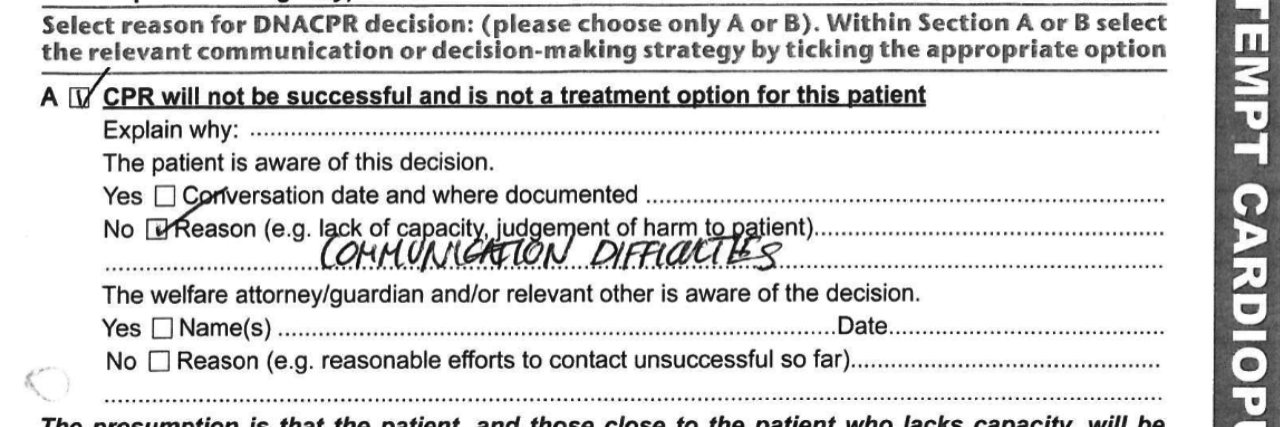Scottish Deaf-led charity Deaf Action reported last week that a profoundly Deaf man in his 60s who had a good quality of life was given a “Do Not Resuscitate” order by NHS Scotland doctors without his knowledge or consent.
“At a recent routine hospital appointment, he was given the DNR order without any communication support to explain what it meant,” Deaf Action wrote on its website. “The order states that ‘in the event of a cardiac or respiratory arrest no attempt to at cardiopulmonary resuscitation (CPR) are intended.'”
According to Deaf Action, the reason this Deaf man was giving a DNR order was due to communication issues. Deaf Action also explained that an interpreter was not provided to help the Deaf man during a routine hospital appointment.
“The NHS did not offer a BSL/English interpreter or any communication support to aid this conversation,” they wrote. “British Sign Language (BSL) is a legally recognised language in Scotland, and BSL users have the right to represent themselves and access information from both deaf and hearing people.”
This DNR order is alarming for numerous reasons. Deaf and hard of hearing people’s lives are not disposable just because we show signs of our disability. Deaf and hard-of-hearing people can also communicate, so the reasoning being communication issues is baffling. Why couldn’t a sign language interpreter be available to help this Deaf man and many others with hearing issues understand what we’re agreeing to medically?
In addition to having a sign language interpreter for people who sign, there are many steps that doctors, nurses and other health professionals can take to better communicate with Deaf and hard of hearing patients. Here are some recommendations from Nursing2021, a peer-reviewed journal:
- Ask the patient what you can do to help improve the communication process.
- Communicate in a well-lit and quiet environment with few visual and auditory distractions.
- Rephrase (don’t just repeat) your message if the patient doesn’t understand you.
- Don’t assume the patient can hear and understand what you’re saying just because they are wearing a hearing aid.
- Ask the patient what communication tools (such as a whiteboard, computer, or tablet) work best for them.
Image via Deaf Action

